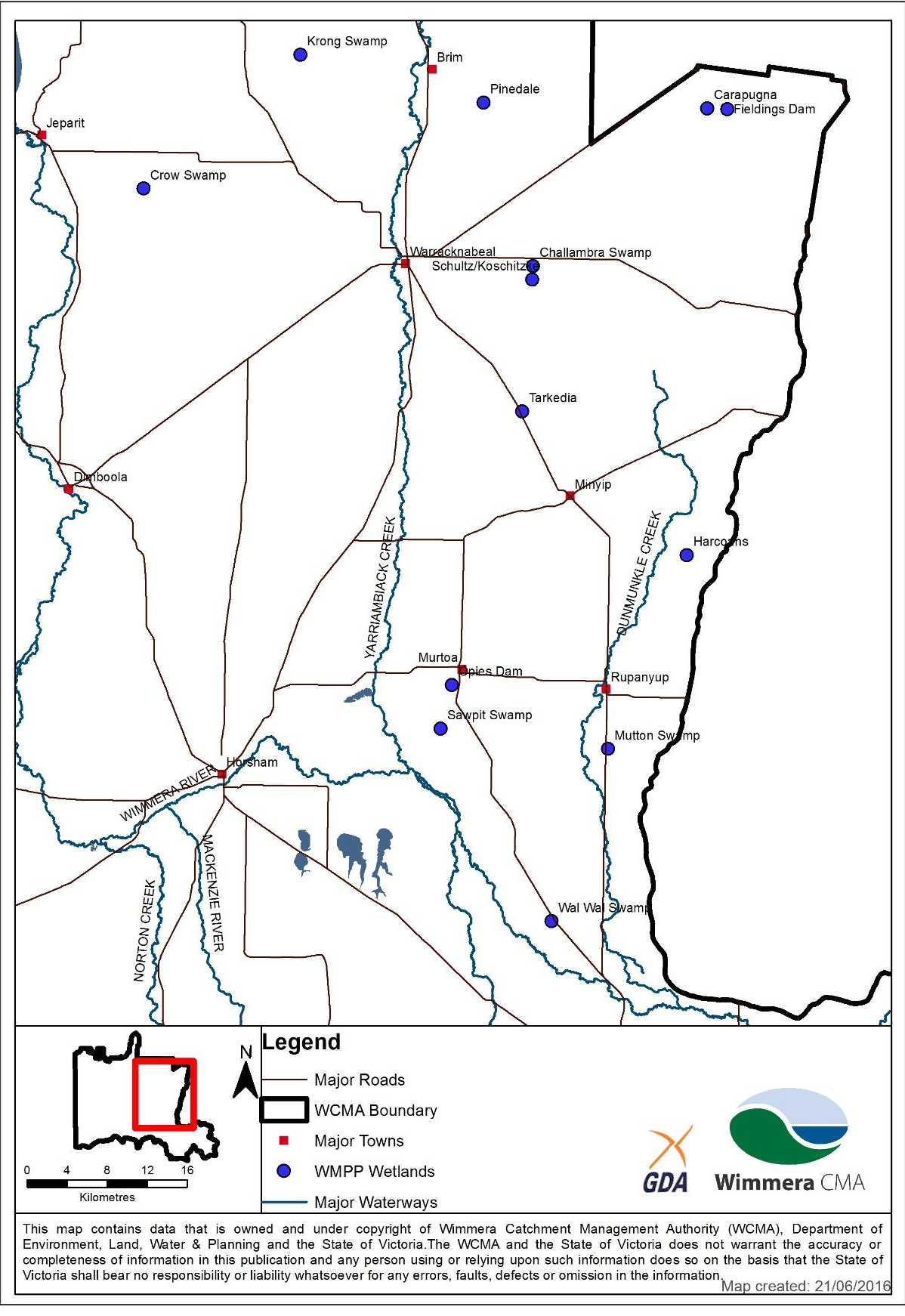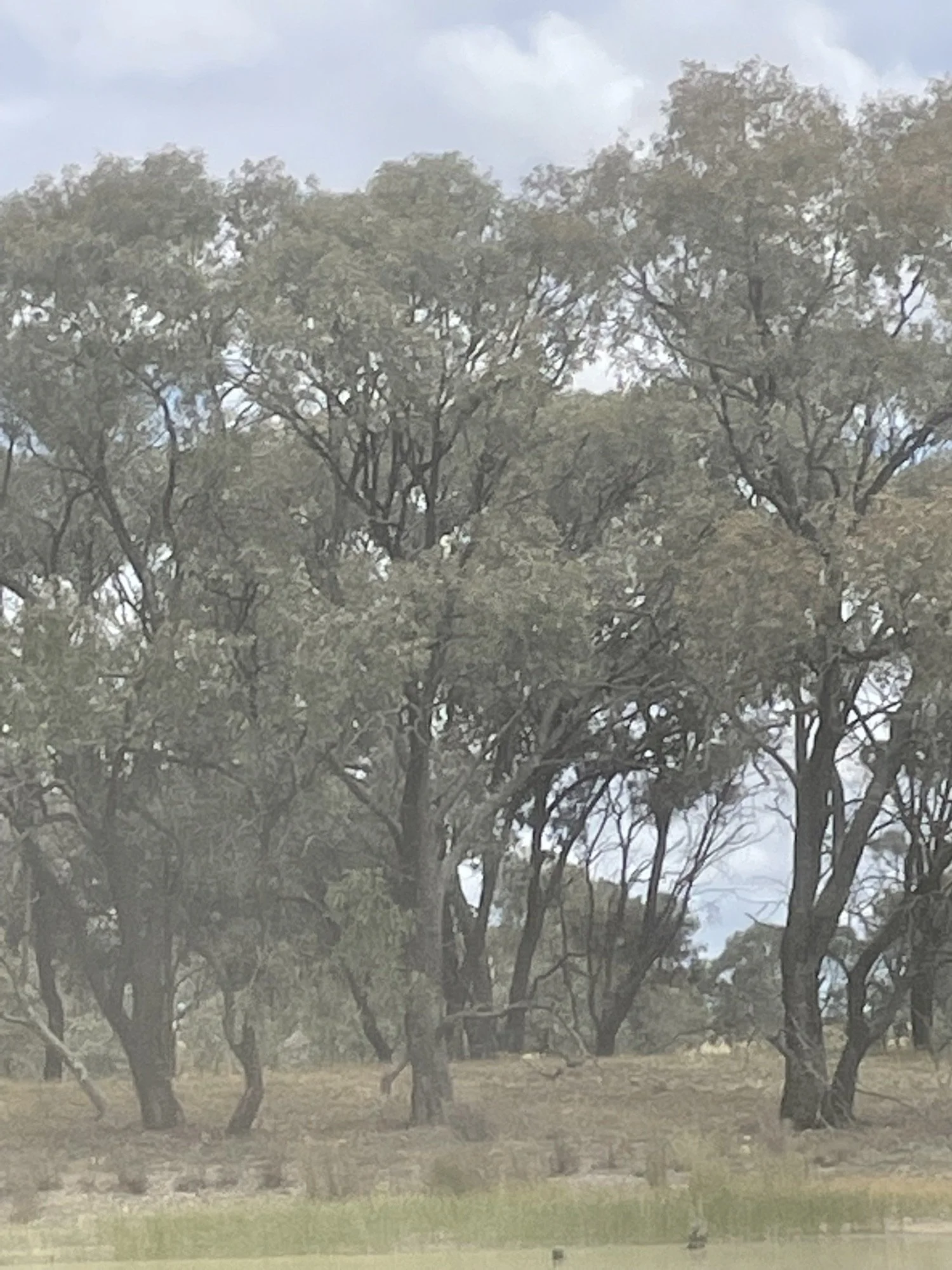Wandering Wimmera Wetlands with WCMA
Crow Swamp
It was a delightful day to be out and about when Marney joined Deb, Planning & Policy Officer Water & Waterways from the WCMA, for a tour of the regions wetlands, notably those within the Yarrilinks districts. The purpose of the tour was to inform Yarrilinks Landcare of potential sites for projects including ecology surveying and revegetation. The tour began in the north of the region at Crow Swamp, before moving on to Krong Swamp, then privately managed Pinedale dam, and Challambra swamp, before heading South to Harcoans swamp, Mutton Swamp and finally Sawpit swamp, with a lunch stop at the Minyip Cafe (of course!).
As detailed in the WCMA Environmental Water Plan 2016, a total of 13 wetlands supplied by the Wimmera Mallee pipeline are located in the Wimmera CMA region. Most of these wetlands are located on Crown Land managed by Parks Victoria, having being set aside as public reserves for water or timber supply in the late 1800’s. They contain wetland habitats of varying quality. Some contain a high diversity of native flora and fauna, including a number of threatened species and are localised centres of biodiversity in what is otherwise a largely cleared broadacre cropping and grazing landscape.
From site to site, Yarrilinks Committee members learned about the different kinds of wetlands and how the WCMA manages the water through pipeline allocations. Species of flora and fauna identified included endangered Cane grass at Krong Swamp, a white faced heron at Mutton Swamp, and a cheeky Shag; that is, a pied cormerant, amongst the numerous long necked turtles at Pinedale. Whilst currently a dry site, Sawpit Swamp showcased the lush vegetation of an ephemeral wetland, wherein in recent wet years birdlife, frog life, and wetland species were recorded in their abundance.
Below [L-R]: Sawpit Swamp, Mutton Swamp, Challambra Swamp
The regions wetlands are impacted and threatened by dry, drainage, and invasive flora and fauna, as well as management practices across both public and privately held spaces. There is an influx of agricultural weeds creeping into many of the wetlands, carried in by wind, water and animals. WCMA is working alongside Landholders including Parks Victoria to manage these sites for environmental benefit. An example of this can be seen at Crow Swamp wherein the partnership intends to undertake cultural style burns to help mitigate invasive weeds including Wild Oat, while chemical treatment to address an infestation of Horehound weed at Harcoans Swamp is being considered.
Eye-spy the white heron at Mutton Swamp. By a clever lay of the land and a leak in the wetland infrastructure means this wetland reticulates its own water, which, when full, offers a refuge for water birds as native wetland species of flora revegetate.
It is important for the Wimmera Catchment Management Authority to understand the ecological value of these sites when considering water allocations, and many sites have undergone preliminary surveying with DEECA. Here, Landcare groups and networks stand strongly to offer a helping hand in keeping wetland species data up-to-date through citizen science surveying. Ecological surveys can be done at any time of year and are beneficial to be undertaken seasonally at each site. The Yarrilinks Landcare Network and groups will be undertaking surveying utilizing citizen science apps iNaturalist and FrogID at select sites soon!
Get in touch for more details - here.
More information on these wetlands can be found here.
The ‘WCMA Environmental Water Management Plan - Wimmera Mallee Pipeline Wetlands, Wimmera CMA region’ can be found here



![Image[6].jpeg](https://images.squarespace-cdn.com/content/v1/64c84dec7388967e1667dab7/1764110102408-BGK1659P5FB2EGB6CNWP/Image%5B6%5D.jpeg)
![Image[7].jpeg](https://images.squarespace-cdn.com/content/v1/64c84dec7388967e1667dab7/1764110103410-A0DN3KN2PF9HQQXHVQ4R/Image%5B7%5D.jpeg)
![Image[8].jpeg](https://images.squarespace-cdn.com/content/v1/64c84dec7388967e1667dab7/1764110107625-N0P6NXDUQQI4FITBYEES/Image%5B8%5D.jpeg)
![Image[1].jpeg](https://images.squarespace-cdn.com/content/v1/64c84dec7388967e1667dab7/1764110164999-AMQ5HS3HKKLE2WG7S7OR/Image%5B1%5D.jpeg)
![Image[2].jpeg](https://images.squarespace-cdn.com/content/v1/64c84dec7388967e1667dab7/1764110160586-4YIW8QXSJTRJO1SNRQOI/Image%5B2%5D.jpeg)
![Image[3].jpeg](https://images.squarespace-cdn.com/content/v1/64c84dec7388967e1667dab7/1764110176323-WX28K5DVLRLFE3R5RC53/Image%5B3%5D.jpeg)
